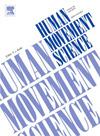Modeling motor learning in juggling: A Bayesian approach
IF 1.9
3区 心理学
Q4 NEUROSCIENCES
引用次数: 0
Abstract
Purpose
We studied the catching accuracy during the skill acquisition of juggling using a probabilistic model, which was justified by the Bayesian brain hypothesis that the internal model constantly updates its parameters based on prior experiences and new practice. We wondered how practice can increase the probability of catching a ball (θ) in juggling by changing the shape of the posterior distribution of θ.
Methods
We recorded the juggling performance of 192 students over 17 days. Using the Bayesian approach, under a prior distribution of beta(θ|1,3), we calculated the posterior distribution of θ and its expectation (E[θ]) and variance (Var(θ)) on each day of practice.
Results
In a decelerated pattern, participants improved E[θ] from 0.43 to 0.86 and reduced Var(θ) from 0.029 to 0.001 over 17 days. Using the posterior distribution, we estimated the probability of different performance outcomes on each day of practice.
Conclusions
The probabilistic model suggests that during motor learning, participants shifted the weight from prior experience to current practice and updated θ in the posterior distribution. Instead of choosing θ close to its theoretically optimal value (i.e., maximum likelihood estimation) across days of practice, participants selected sub-optimal θ at the beginning and gradually improved θ to its optimal value during learning. Our model not only contributes to the theoretical understanding of skill acquisition from a probabilistic perspective but also could be applied to some other discrete motor skills requiring hand-eye coordination.
杂耍中的动作学习建模:贝叶斯方法。
目的:利用概率模型研究杂耍技能习得过程中的接球准确性,并通过贝叶斯脑假设证明内部模型会根据先前的经验和新的练习不断更新其参数。我们想知道练习如何通过改变θ后验分布的形状来增加杂耍中接住球(θ)的概率。方法:对192名学生在17天内的杂耍表演进行记录。利用贝叶斯方法,在β (θ|1,3)的先验分布下,我们计算了每天训练时θ及其期望(E[θ])和方差(Var(θ))的后验分布。结果:在减速模式下,参与者在17天内将E[θ]从0.43提高到0.86,并将Var(θ)从0.029降低到0.001。使用后验分布,我们估计了每天练习中不同表现结果的概率。结论:概率模型表明,在运动学习过程中,参与者将权重从先前经验转移到当前实践,并更新了后验分布的θ。而不是选择θ接近其理论最优值(即最大似然估计)在练习的日子里,参与者在开始时选择次优θ,并在学习过程中逐步改进θ到其最优值。我们的模型不仅有助于从概率角度对技能习得的理论理解,而且可以应用于其他一些需要手眼协调的离散运动技能。
本文章由计算机程序翻译,如有差异,请以英文原文为准。
求助全文
约1分钟内获得全文
求助全文
来源期刊

Human Movement Science
医学-神经科学
CiteScore
3.80
自引率
4.80%
发文量
89
审稿时长
42 days
期刊介绍:
Human Movement Science provides a medium for publishing disciplinary and multidisciplinary studies on human movement. It brings together psychological, biomechanical and neurophysiological research on the control, organization and learning of human movement, including the perceptual support of movement. The overarching goal of the journal is to publish articles that help advance theoretical understanding of the control and organization of human movement, as well as changes therein as a function of development, learning and rehabilitation. The nature of the research reported may vary from fundamental theoretical or empirical studies to more applied studies in the fields of, for example, sport, dance and rehabilitation with the proviso that all studies have a distinct theoretical bearing. Also, reviews and meta-studies advancing the understanding of human movement are welcome.
These aims and scope imply that purely descriptive studies are not acceptable, while methodological articles are only acceptable if the methodology in question opens up new vistas in understanding the control and organization of human movement. The same holds for articles on exercise physiology, which in general are not supported, unless they speak to the control and organization of human movement. In general, it is required that the theoretical message of articles published in Human Movement Science is, to a certain extent, innovative and not dismissible as just "more of the same."
 求助内容:
求助内容: 应助结果提醒方式:
应助结果提醒方式:


